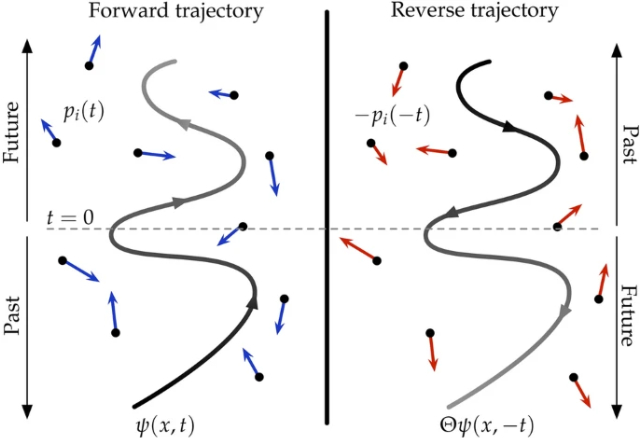
Despite our best efforts, the mystery of tomorrow remains beyond our grasp, and the underlying reasons are still a puzzle for physicists.
In their quest to understand the nature of time, researchers from the University of Surrey—Thomas Guff, Chintalpati Umashankar Shastry, and Andrea Rocco—embarked on a journey to uncover evidence of time’s existence within the quantum realm, using a model reminiscent of a hot quantum bath set against the backdrop of the universe’s vastness.
Ultimately, their search did not yield the expected results. Instead, they found that time flows both forwards and backwards within the strange realm of quantum mechanics. However, the insights gained from this exploration may provide essential clues to understanding why physics attributes such importance to the concept of historical events.
In technical terms, the symmetry of physics concerning time is intriguing. While we wouldn’t witness an egg spontaneously uncracking or an acorn transforming back into an oak tree, when we distill most physical phenomena to their core laws, there’s little that dictates which side of an equation must be associated with the past and which with the future.

There’s no shortage of avenues to investigate why we perceive the past as unchangeable. For instance, cosmologists have analyzed the universe’s evolution from states of low to high entropy. Quantum physicists have speculated whether the expanding entanglement of particles with their environments plays a role. Despite these endeavors, a definitive explanation for time’s cohesion is still elusive.
Guff, Shastry, and Rocco proposed that quantum equations of motion may conceal mechanisms that prevent a return to previous states, acting like a ratchet that ensures the laws governing a system don’t regress.
Utilizing a mathematical framework known as a Markov chain, they created a simplified model representing heated particles moving in an open space. Through Markovian dynamics, which posits that a system has no memory beyond its current state, each new quantum state is influenced solely by the immediate prior state. This setup could lead to either a one-way trajectory into the future or a reversible path allowing particles to oscillate backward.
As they scrutinized their bath’s equations, the team discovered no evidence that time-reversal symmetry conflicted with the quantum activities observed. This indicated that the ‘memory’ of the Markovian system shows no bias toward the past or future.

“Our research indicates that while our daily experiences suggest time progresses in one direction, it is plausible that the opposite direction is equally attainable,” says Rocco.
However, even if time can oscillate at a quantum level, our experiences in the macroscopic world are distinctly linear. For example, a warm bath under the vast cosmos inevitably cools down as its energy dissipates into the expanding universe.
The trio emphasizes that their results do not challenge the laws of thermodynamics which, in many cases, are fundamentally irreversible. Nevertheless, even if quantum interactions permit time reversal, processes like steady cooling still take place, suggesting a lack of distinction between the forward and backward timelines at the quantum level concerning thermodynamics.
If this notion holds true, our shared perception of time’s unidirectional flow may be complemented by an alternate pathway, sustained by cosmic expansion and a burgeoning energy emanating from a quantum origin that is as adept at recalling the future as it is the past.
This exploration was shared in the journal Scientific Reports.









